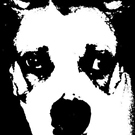I was working on a Server-Client application with a large amount of nodes. Occasionally, the client would connect but would just have a black screen with no explanation.
I investigated further and noticed that with more than 10K nodes, the server stops transferring any more nodes past 20K or so. This then led to the error. Any idea why this would be happening?
The other issue one encounters when using lots of nodes is a very high octree culling time per frame (Usually upwards of 5 ms). Since 90% of the nodes in my scene are not rendered at the same time, is there any way to make this function more efficient?
Thanks for the help.
Regards,
Don



